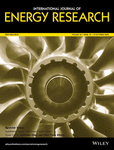Heat transfer enhancement in light-emitting diode packaging employing different molar concentration of magnesium oxide thin films as a heat spreader
Summary
To solve thermal management difficulties created by miniaturization of light-emitting diode package, magnesium oxide thin film was spin coated on the aluminum 5052-grade substrate and employed for heat spreading and improvement of the thermal path for heat removal from light-emitting diode parcel to ambient. Thickness of different films of magnesium oxide was prepared from 0.6M and 0.8M precursors to find out the effects of films thickness and molar concentrations towards perfect heat spreading. Results from X-ray diffraction (XRD) proves the MgO thin film as cubic with the crystalline orientations of (200), (220), and (222). Good results were highlighted through 20 layers (0.6M) MgO thin film in respect to its transient thermal analysis compared with other layers from 0.6M and 0.8M and bare Al substrate; this was due to its nonporous and evenly distributed particles size (56.0 nm), film thickness (301.7 nm), surface roughness (121 nm), higher thermal conductivity (26.3 W/mK), and free from internal cracks and defects. Lower total thermal resistance (11.4 K/W), lower junction temperature (98.8°C), optimal thermal impedance (36.43°C), higher illumination from light-emitting diode, and operation within safe operating temperature range (2700-3000 K) for high-power light-emitting diodes were all recorded at 700 mA from the tested light-emitting diode mounted on 20 layers (0.6M) magnesium oxide thin film. This study consequently proved magnesium oxide thin film as an alternative heat spreader in lighting technology packaging.




